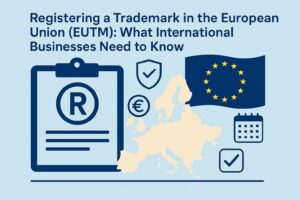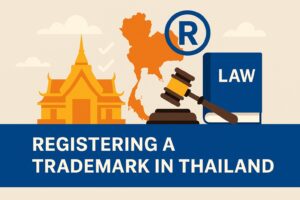United States Trademark Protection for Chinese and Vietnamese Brand Names
I recently spent a few days in Houston, among other things enjoying the culinary delights that can only be found in a city as international as H-Town. During these explorations, which included stops at some superb Chinese and Vietnamese eateries, I had the chance to talk to some restaurant owners and managers. They raised a number of interesting questions regarding trademarks, particularly on the subject of U.S. trademark protection for Chinese and Vietnamese names.
1. Can a name in Chinese characters obtain trademark protection in the United States?
Yes. Trademarks that include Chinese characters can be registered in the United States. An example is 同仁堂, which is the name of a famous Chinese pharmaceutical company, Tong Ren Tang, registered as No. 5,905,702.
According to federal regulations, trademarks containing non-Latin characters (such as Chinese characters) require a transliteration, along with either a translation of the term in English or a statement indicating that the term has no meaning in English. This process ensures clarity for the U.S. Patent and Trademark Office (USPTO) and potential consumers. For instance, if a Chinese restaurant name includes the characters 龙园 (lóng yuán in pinyin), the applicant would need to submit “LONG YUAN” as the transliteration and specify that “LONG” means ‘”dragon” and “YUAN” means “garden” in English. However, if the Chinese characters together represent a coined term without a specific English meaning, the applicant should state that.
To further illustrate this requirement, the trademark registration certificate for Tong Ren Tang’s trademark includes detailed transliterations and explanations:
The wording “TONG” means “same” in English, “REN” means “kindheartedness” in English,
and “TANG” means “hall” in English; as a combination, these three Chinese characters have
no specific meaning.
The transliteration of the non-Latin characters in the mark is: “TONG REN TANG”.
On a technical note, Chinese names cannot be registered as standard character marks, also known as a word mark. The trademark must be registered as a design mark instead, which could have implications for the application process and resulting scope of protection.
Check out our earlier post, Trademarking Chinese Words, to learn more.
2. Is a Vietnamese name in Latin characters?
As opposed to those in Chinese, names in Latin characters can be registered as a word mark. Vietnamese is currently written using Latin characters, but these are complemented with diacritics. For example, the proper way to write the name of Vietnam’s capital in Vietnamese is Hà Nội, not Hanoi. In some cases, diacritics help distinguish letters (“a” and “â” are different letters), while in others they are used to indicate tone (for example, “á”). Sometimes, two diacritics are used at the same time.
The U.S. Patent and Trademark Office (USPTO) recognizes certain Latin characters, including some Vietnamese letters with diacritics. However, not all are included, which means that names featuring these unique characters might need to be registered as design marks instead of word marks. For example, the “à” in Hà Nội is found on the list, but not the “ộ”. Most likely this is because “à” is used in several European languages, while “ộ” appears to be used only in Vietnamese.
3. Does Using the Name of a Popular Restaurant Abroad Constitute Trademark Infringement in Houston?
The answer to this question will depend on the specific facts. However, trademark rights are territorial, meaning that a trademark registered in the United States does not automatically grant protection in other countries and vice-versa. For instance, in the case of Burger King, when the American fast-food chain tried to expand into Australia, they discovered that the BURGER KING trademark was already registered in Australia. As a result, they had to operate under the name Hungry Jack’s in Australia. This highlights the importance of conducting thorough trademark searches and understanding local trademark rights before expanding or adopting a brand name abroad.
Taking inspiration from an amazing Ho Chi Minh City pho shop or Hong Kong dai pai dong when naming a restaurant in Houston might not result in a trademark infringement claim. However, conducting a thorough search using the USPTO database and consulting a U.S. trademark attorney is essential to avoid potential legal disputes. The United States is a litigious country and using a name that is identical or confusingly similar to a registered or applied-for trademark could lead to costly litigation. While the original pho shop or dai pai dong may not hold trademark rights in the U.S., there may already be someone here in America who has already registered a similar name or drawn inspiration from it. To avoid potentially costly conflicts, proactive legal steps are key.
What questions do you have?

























